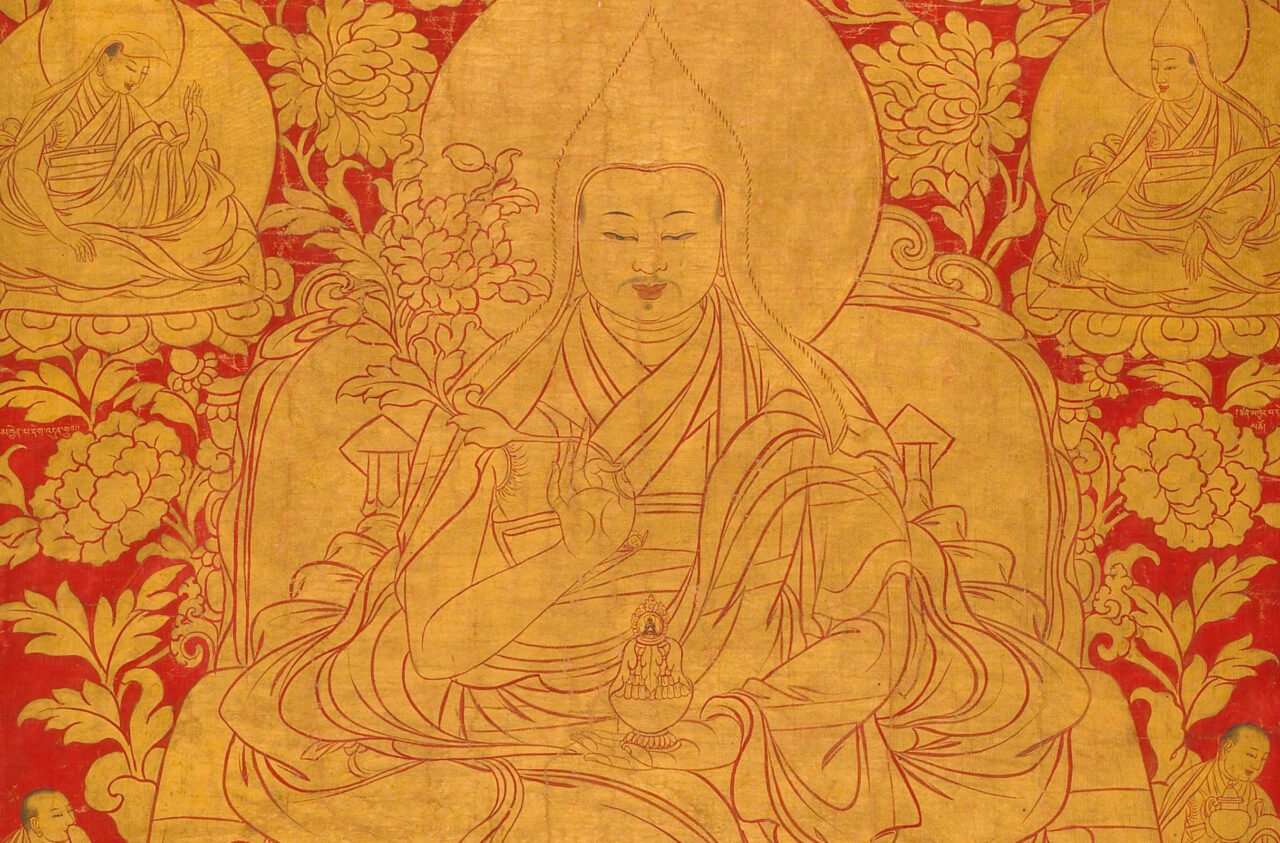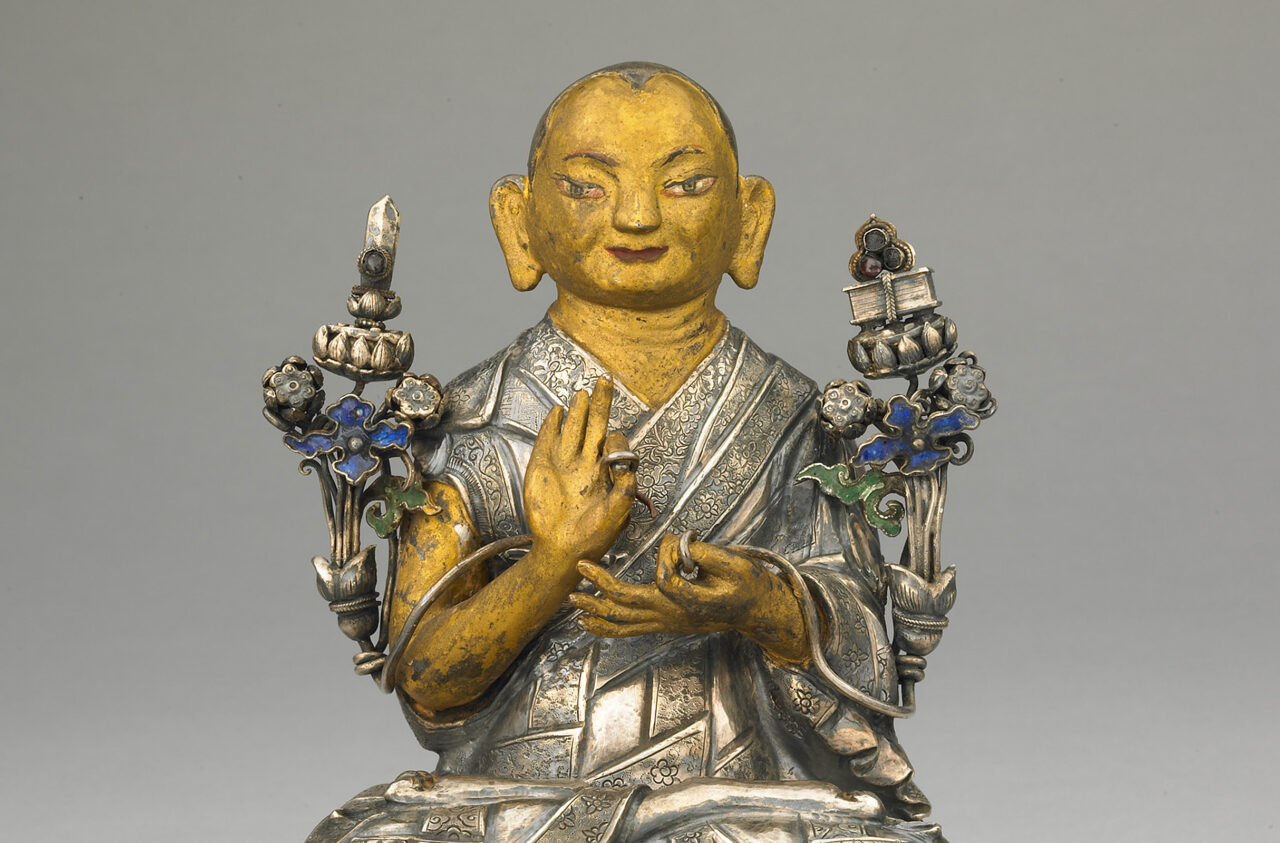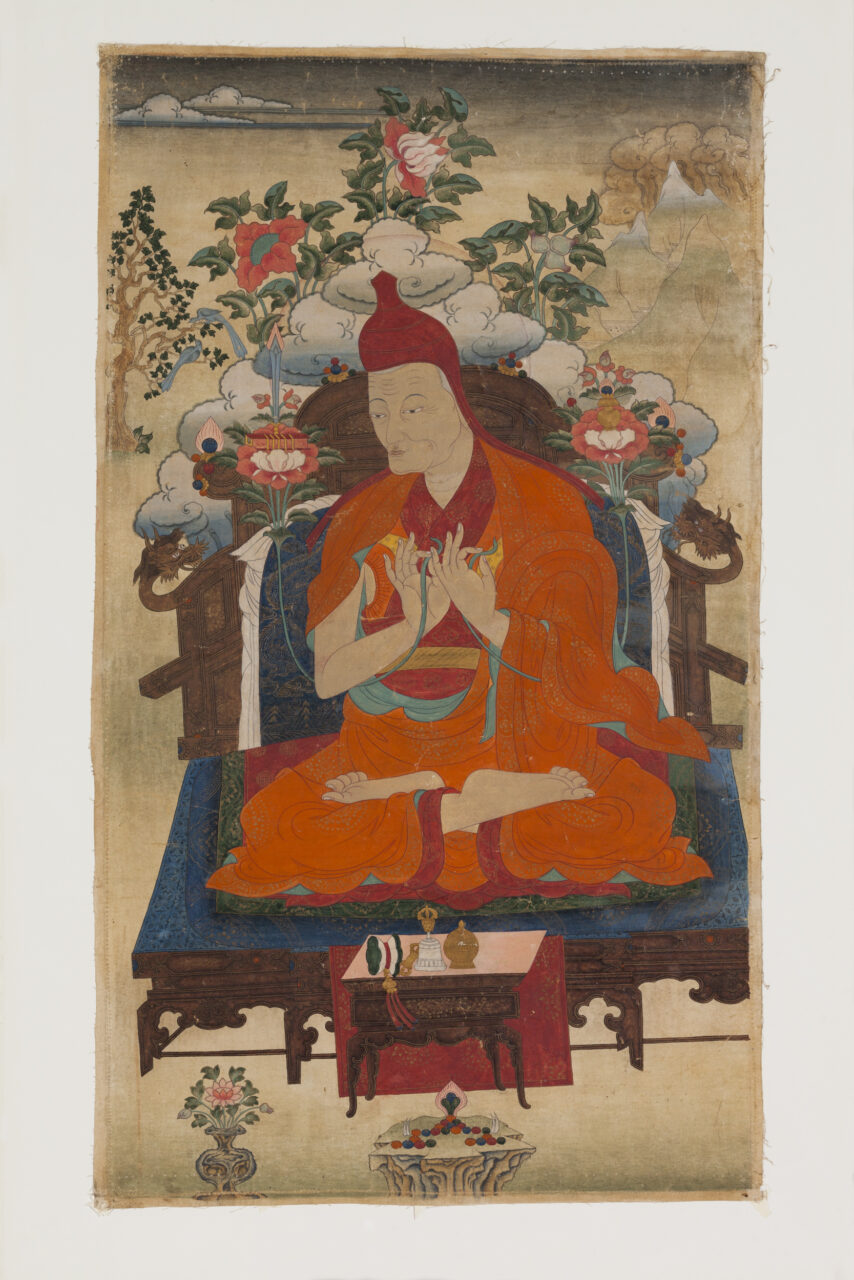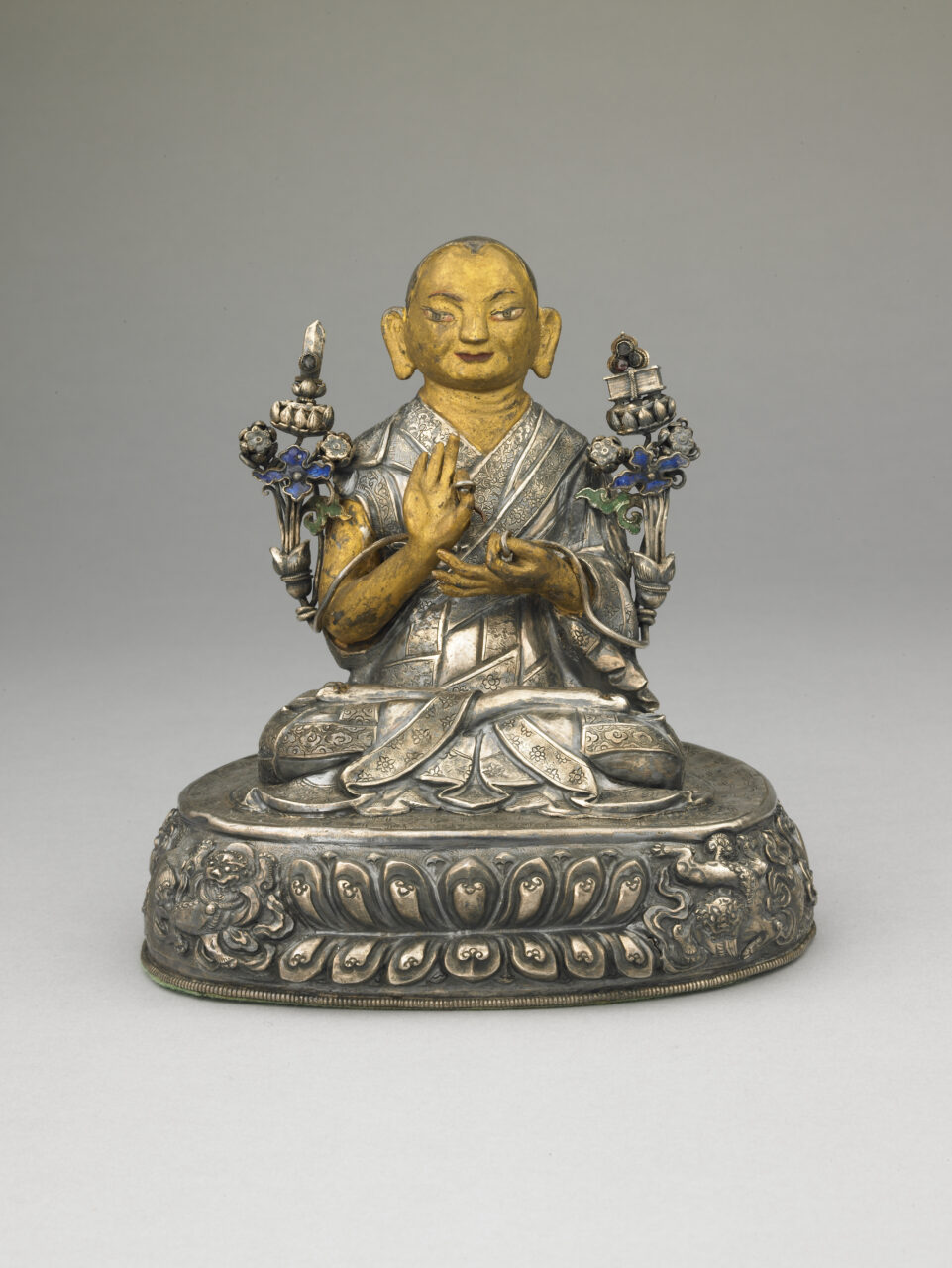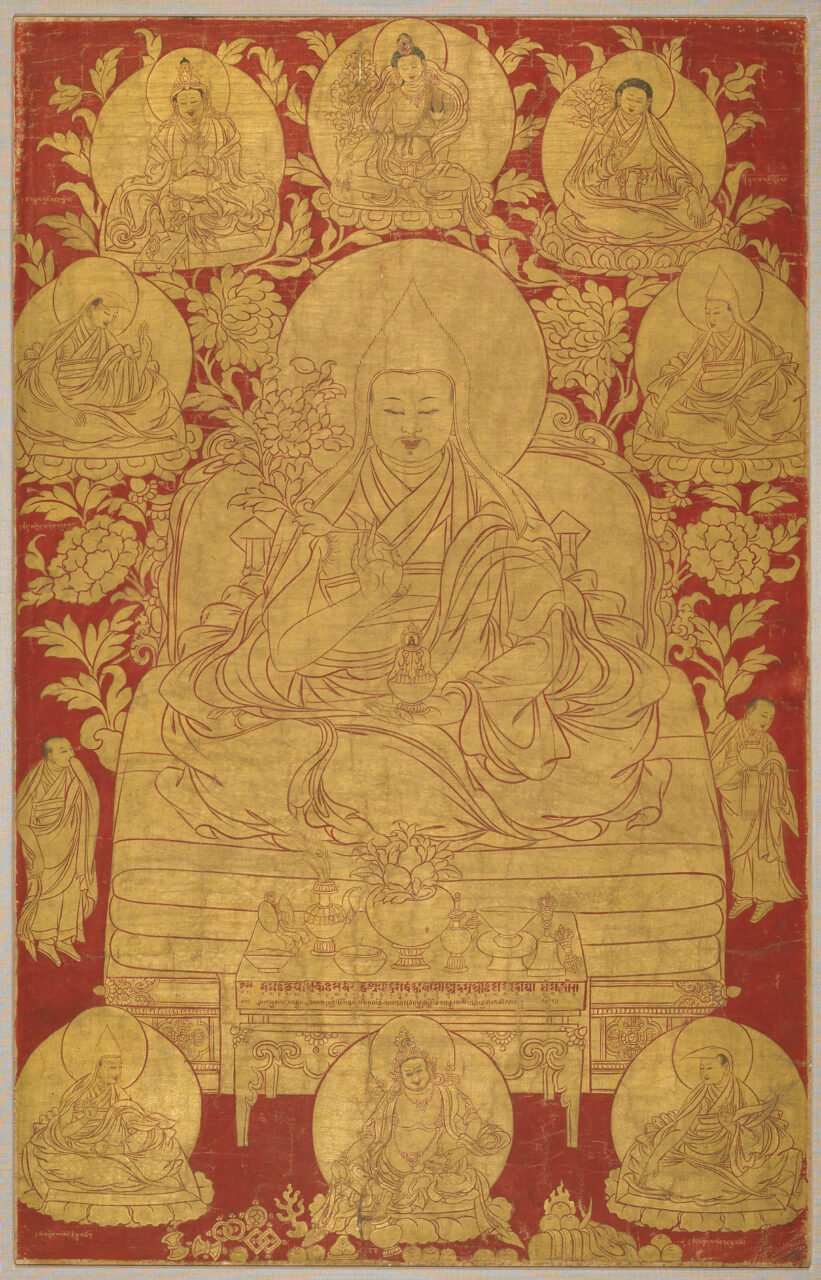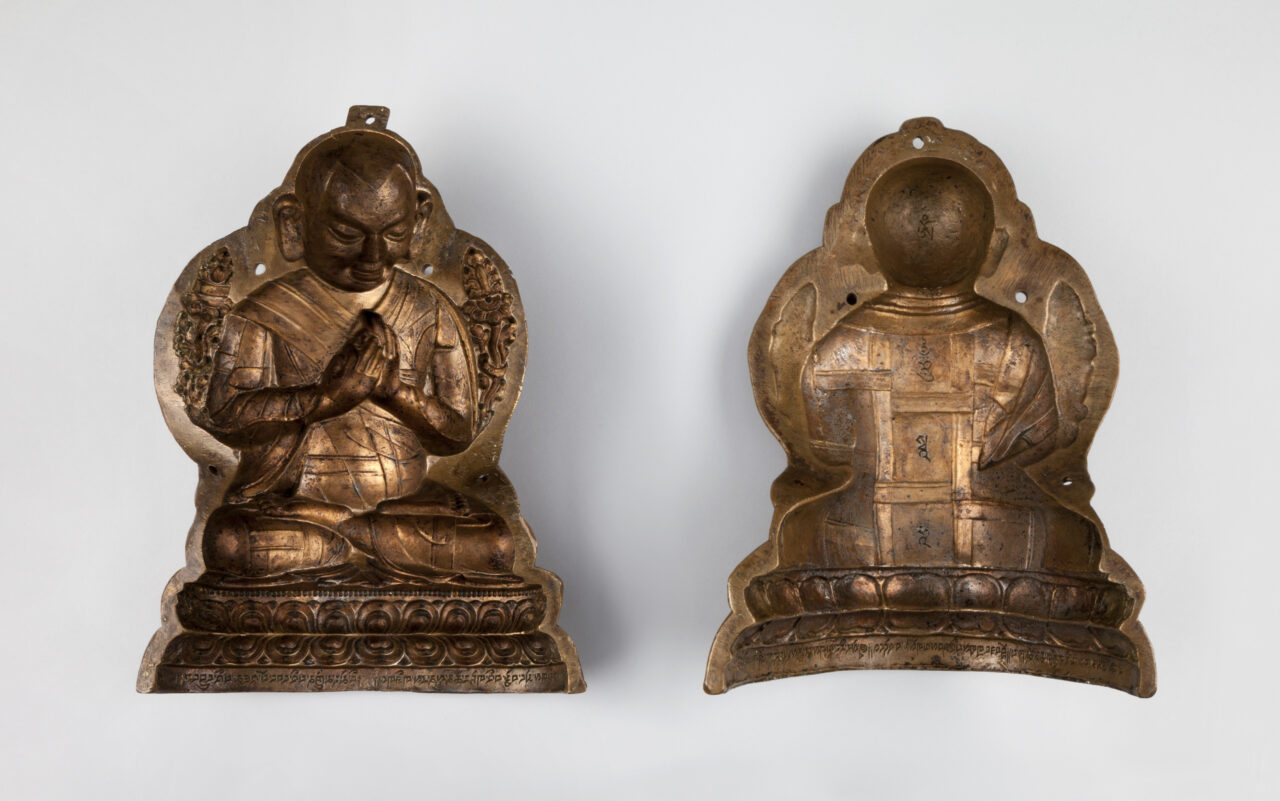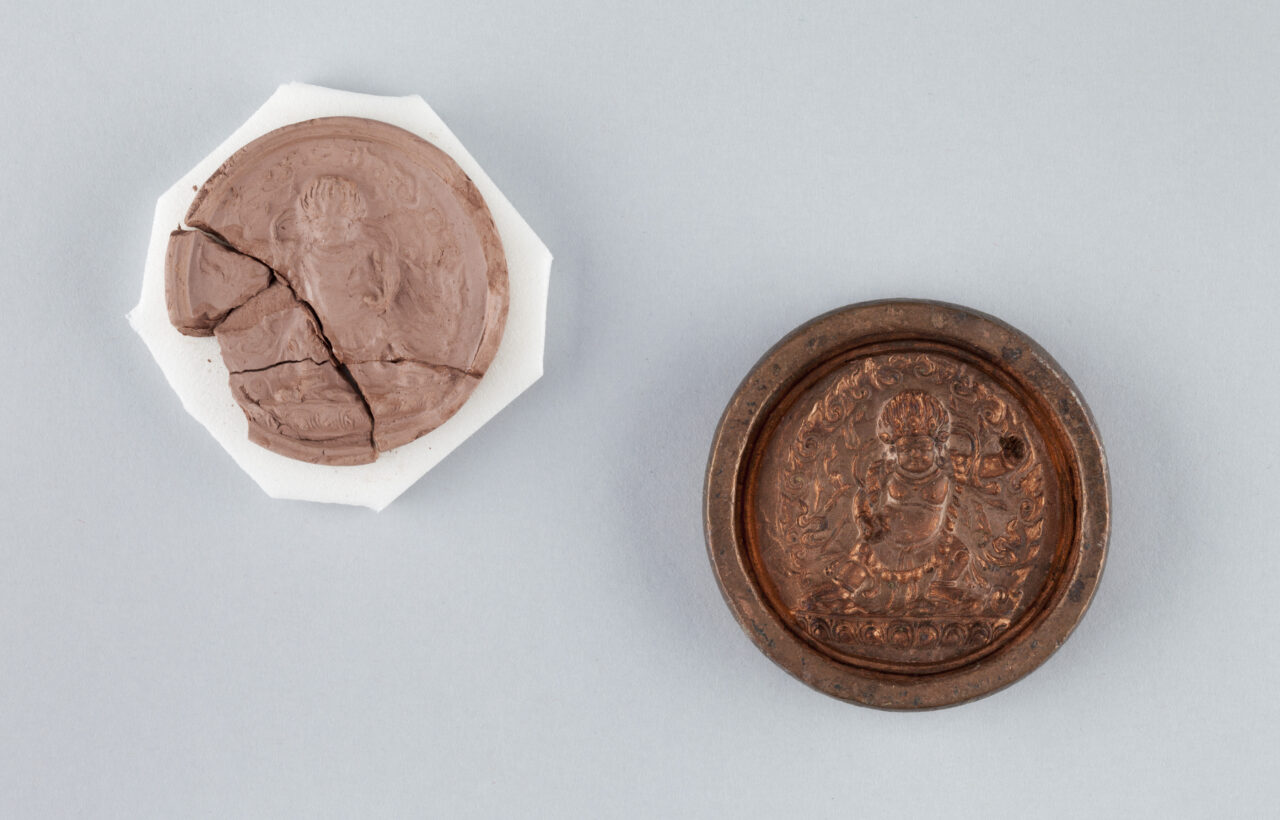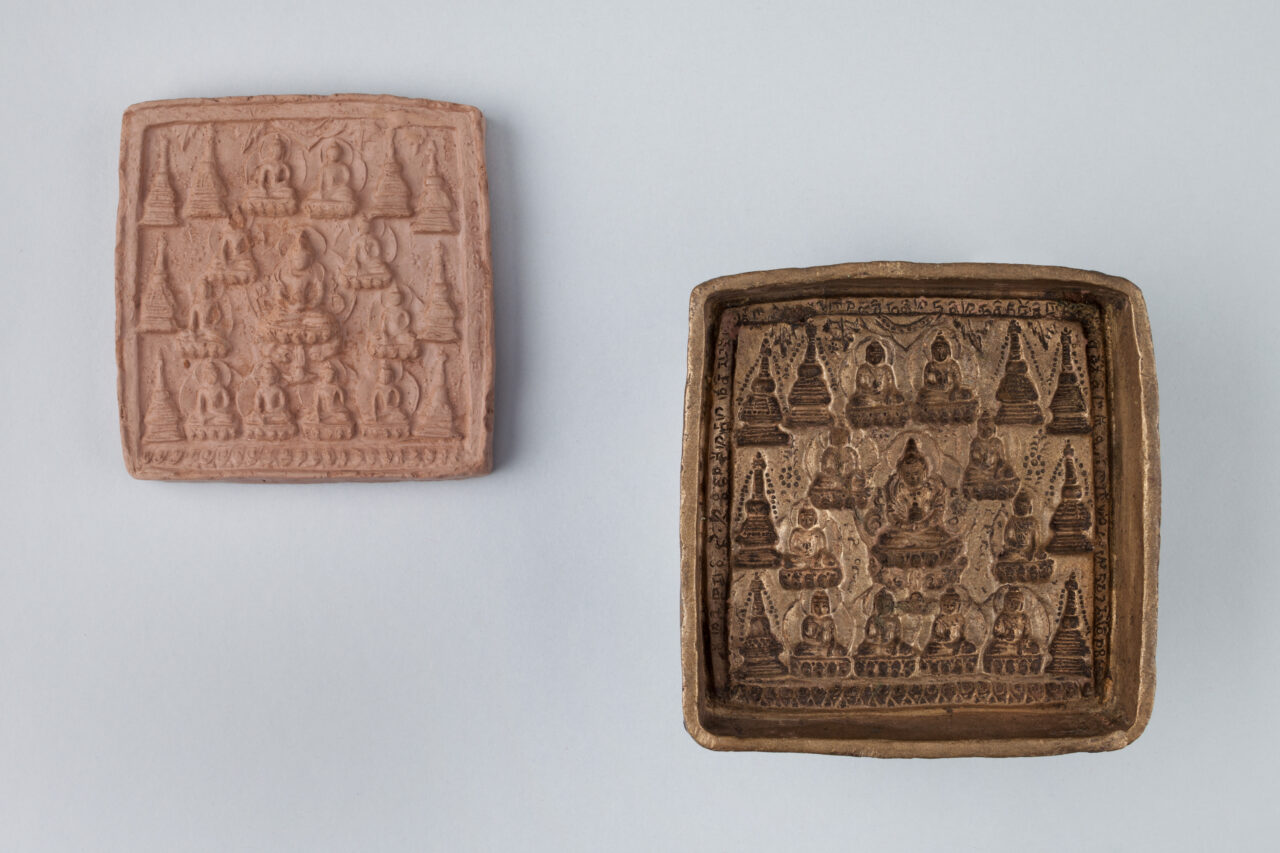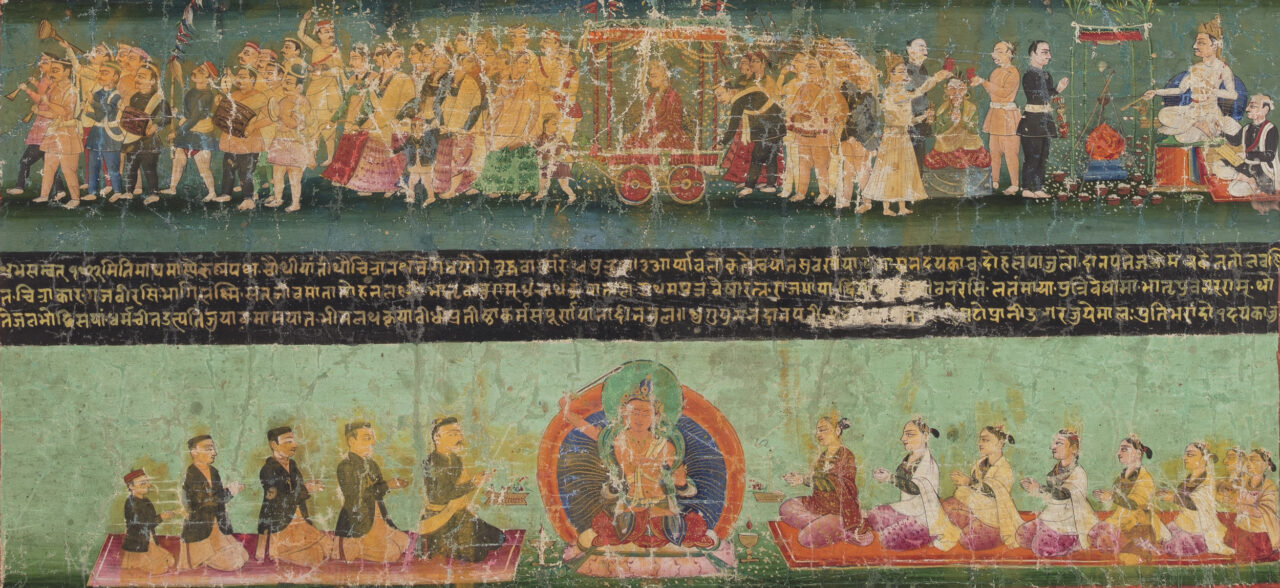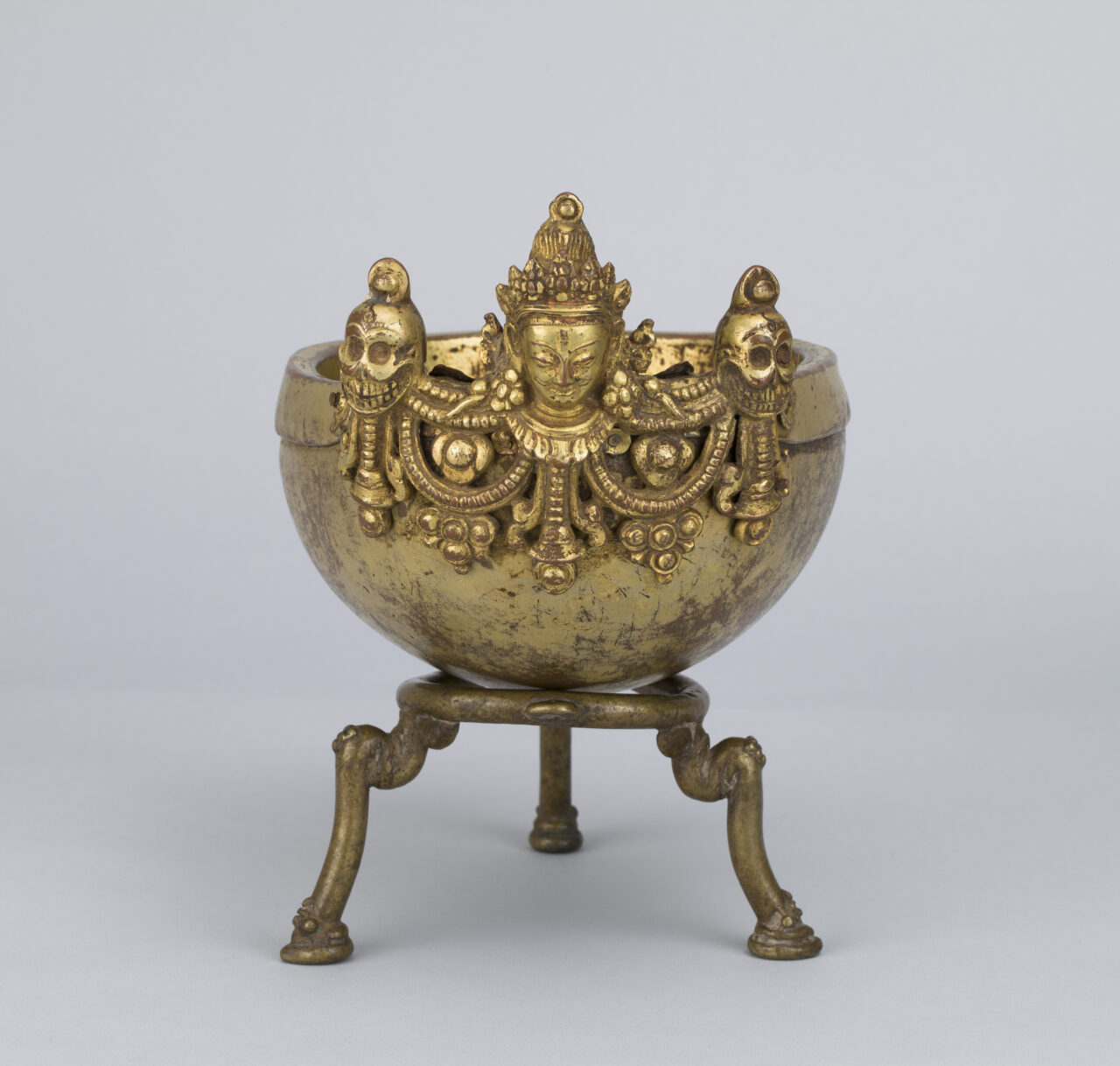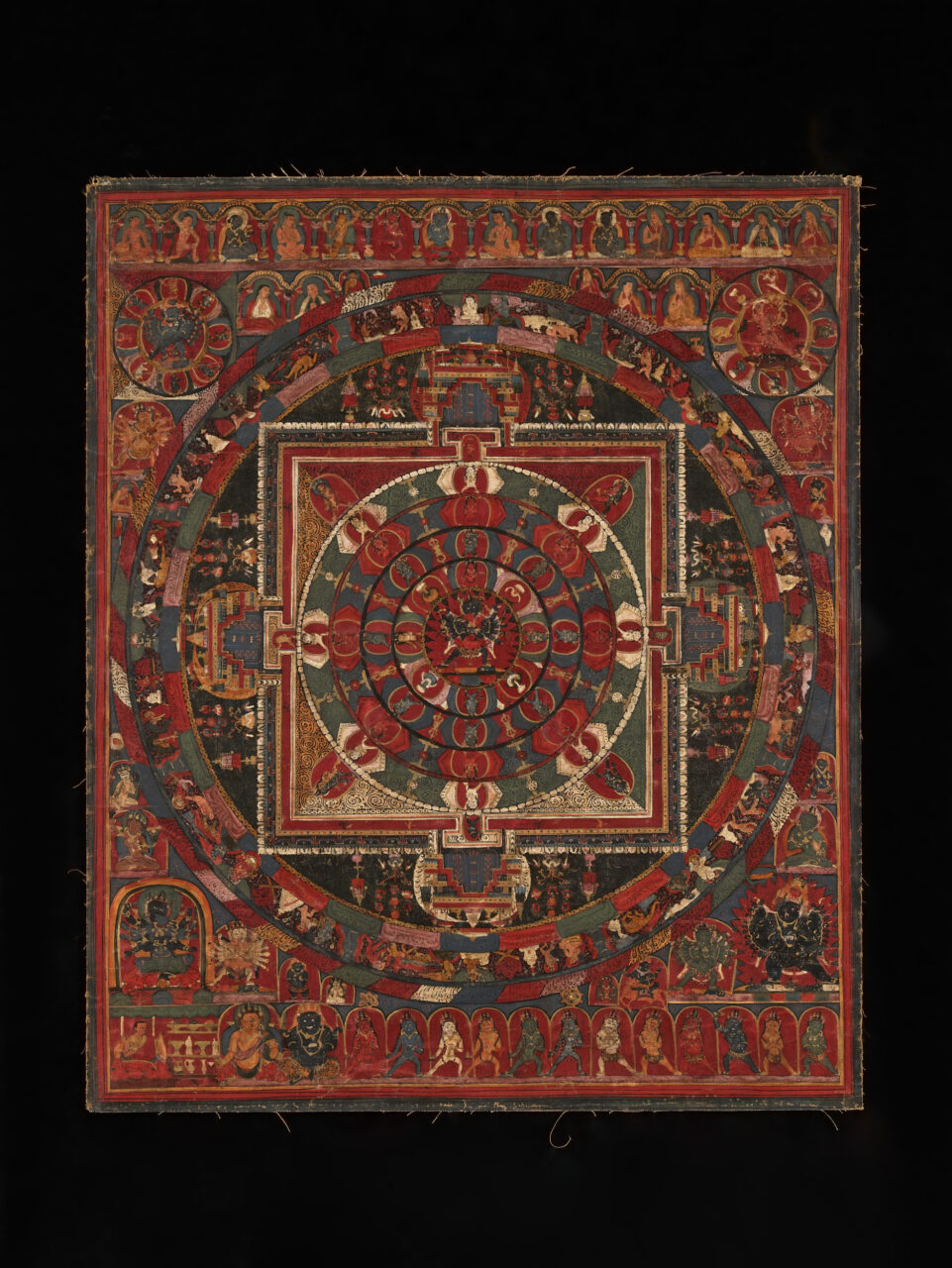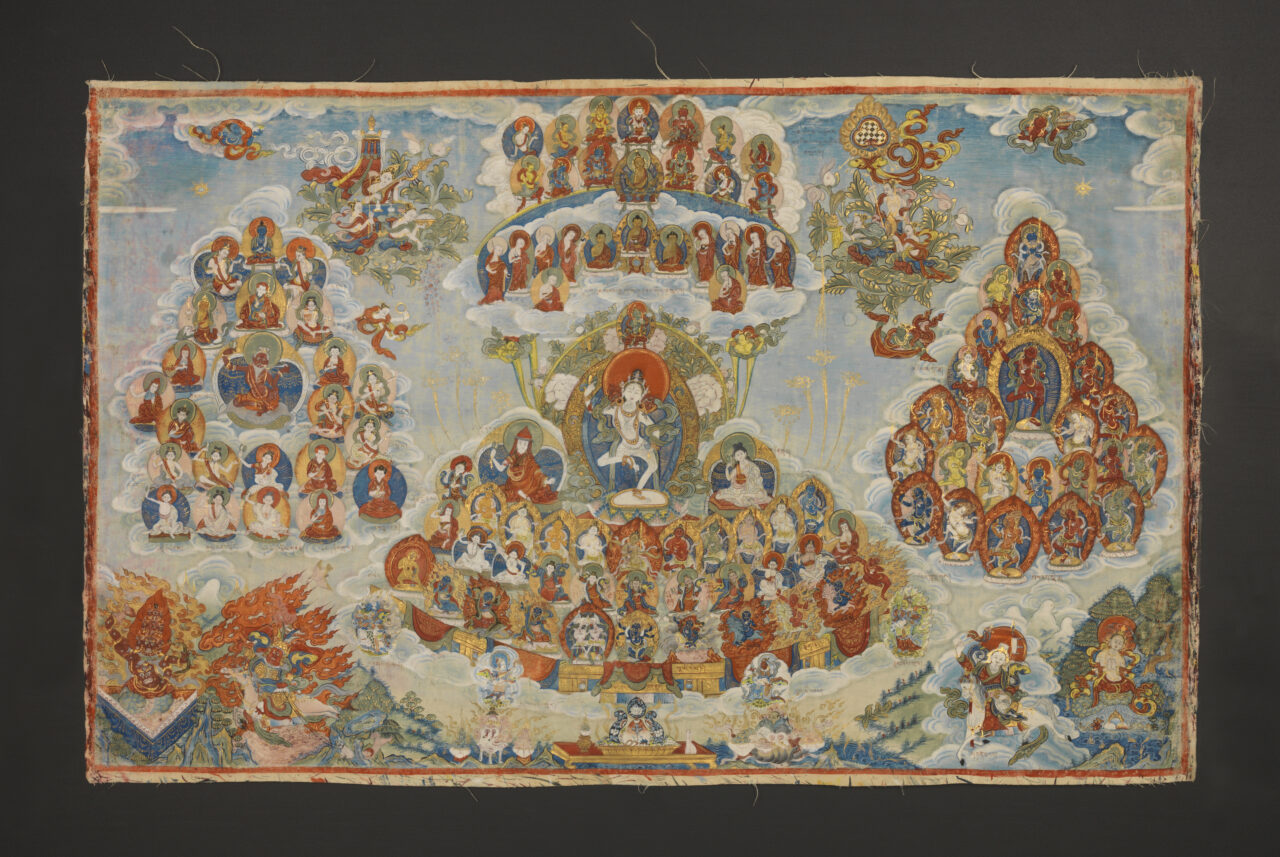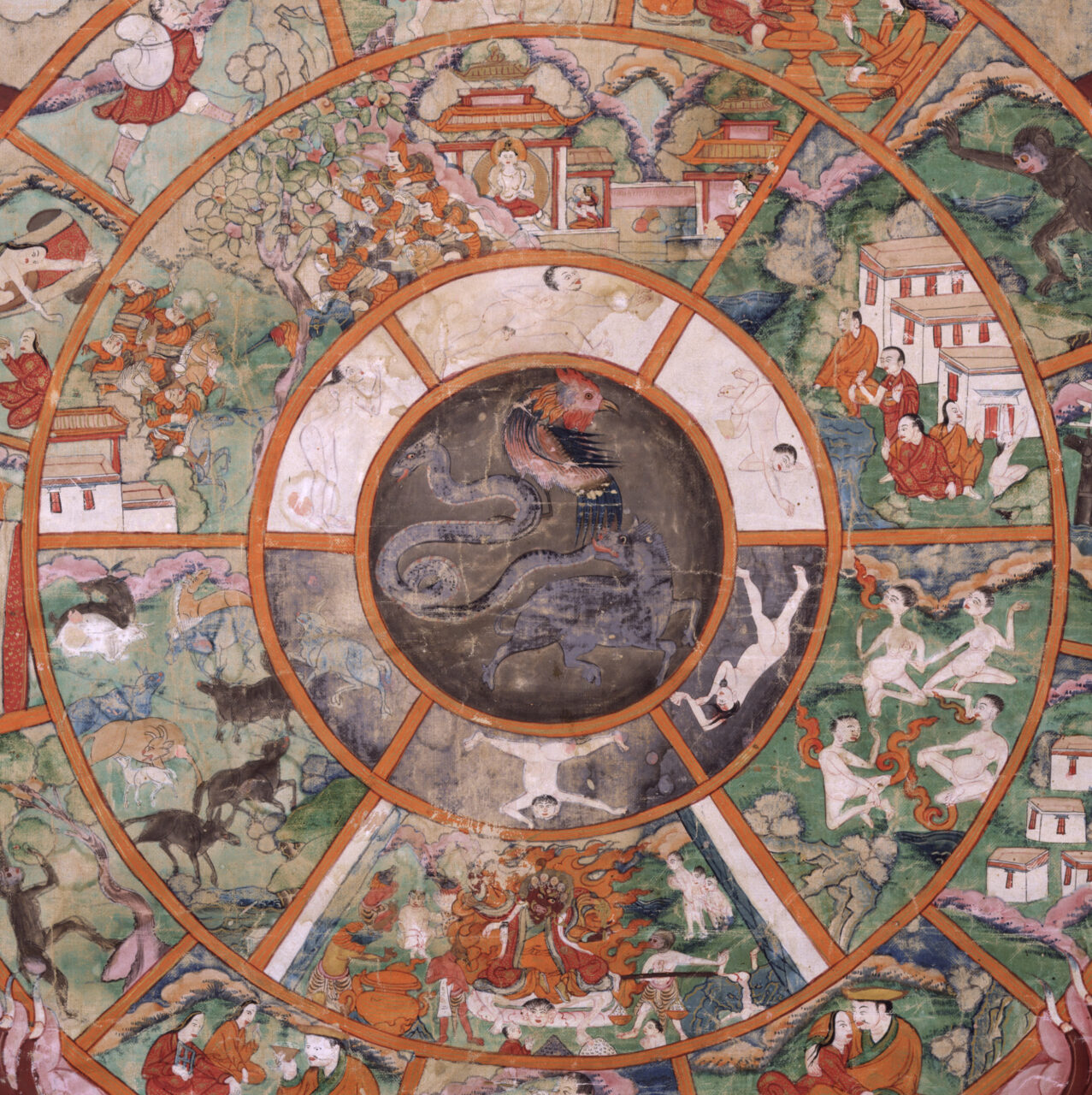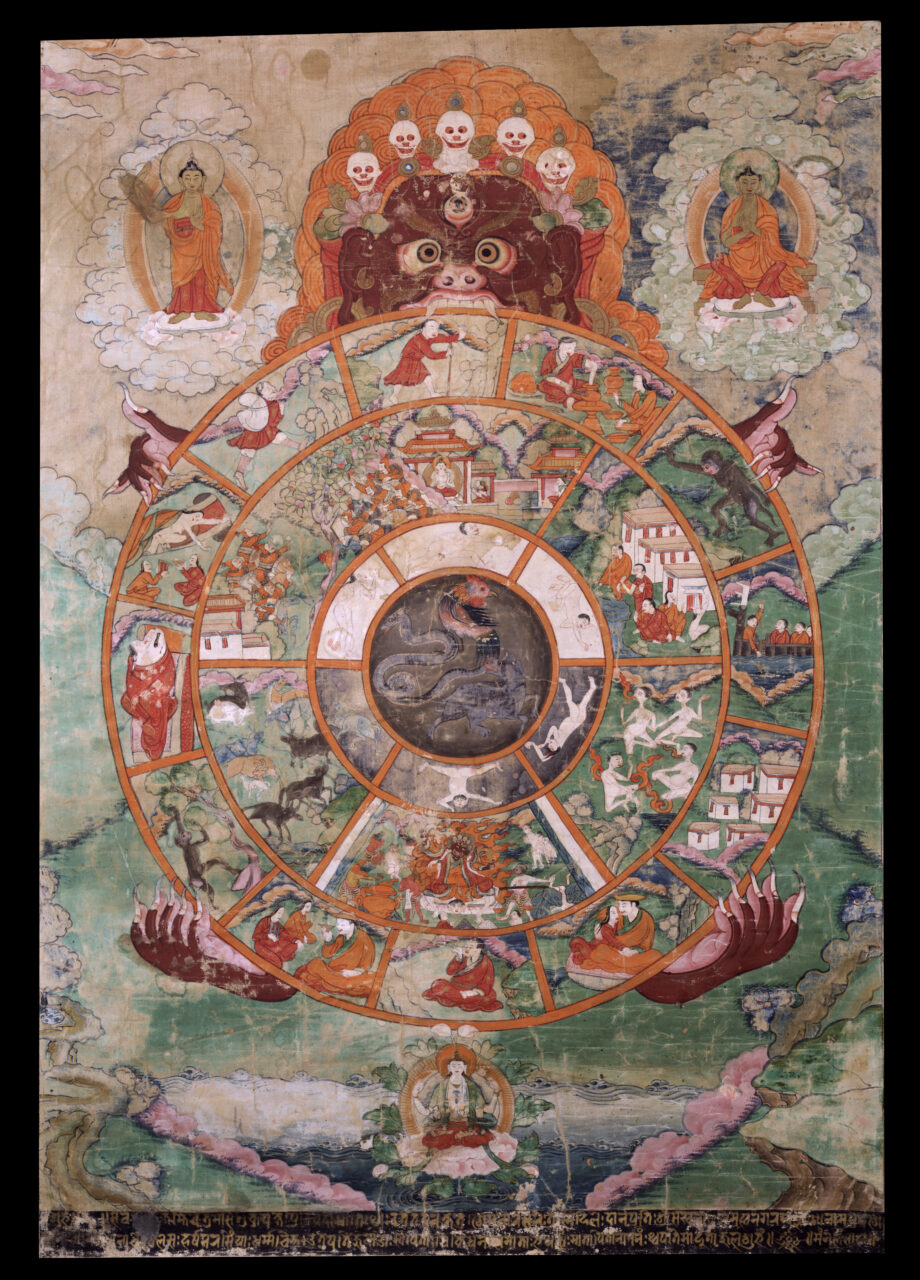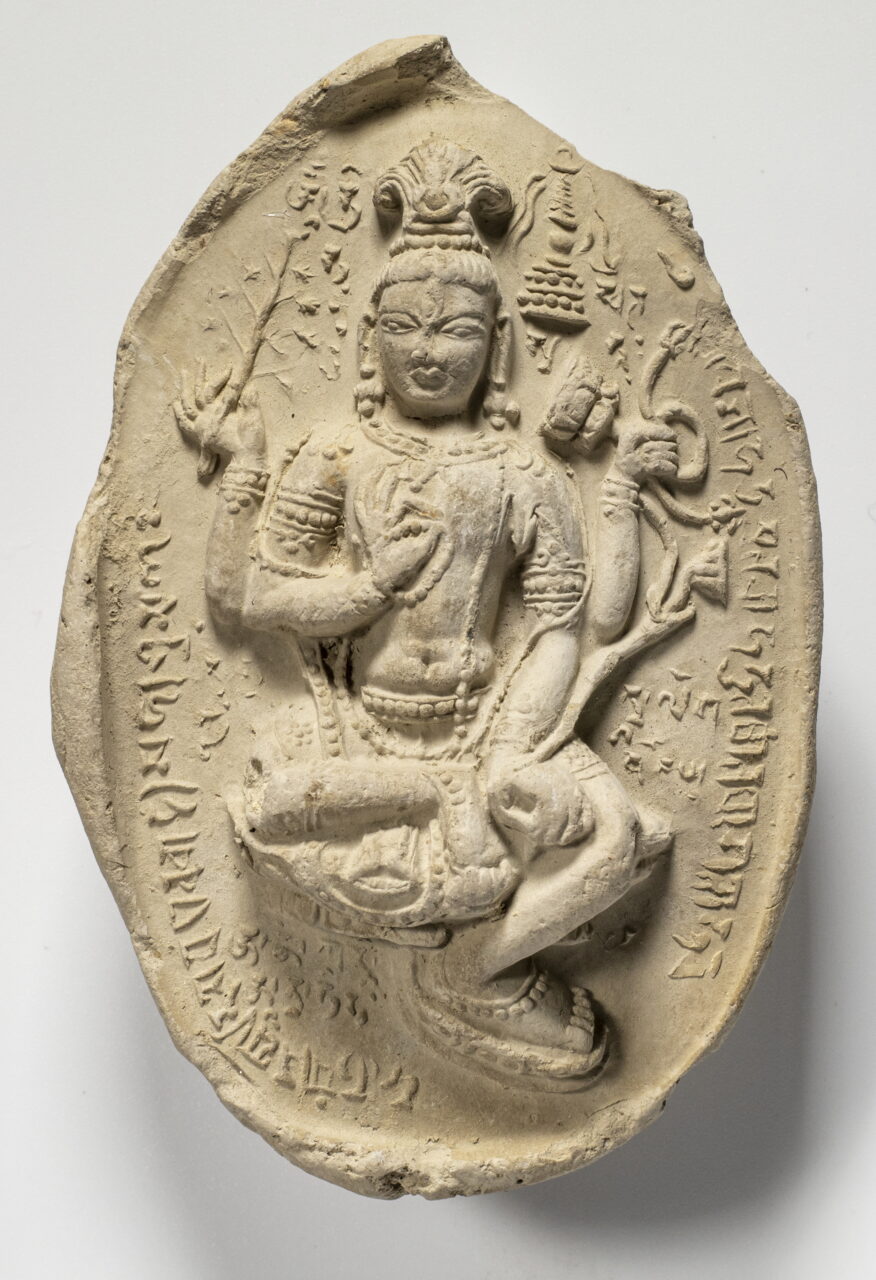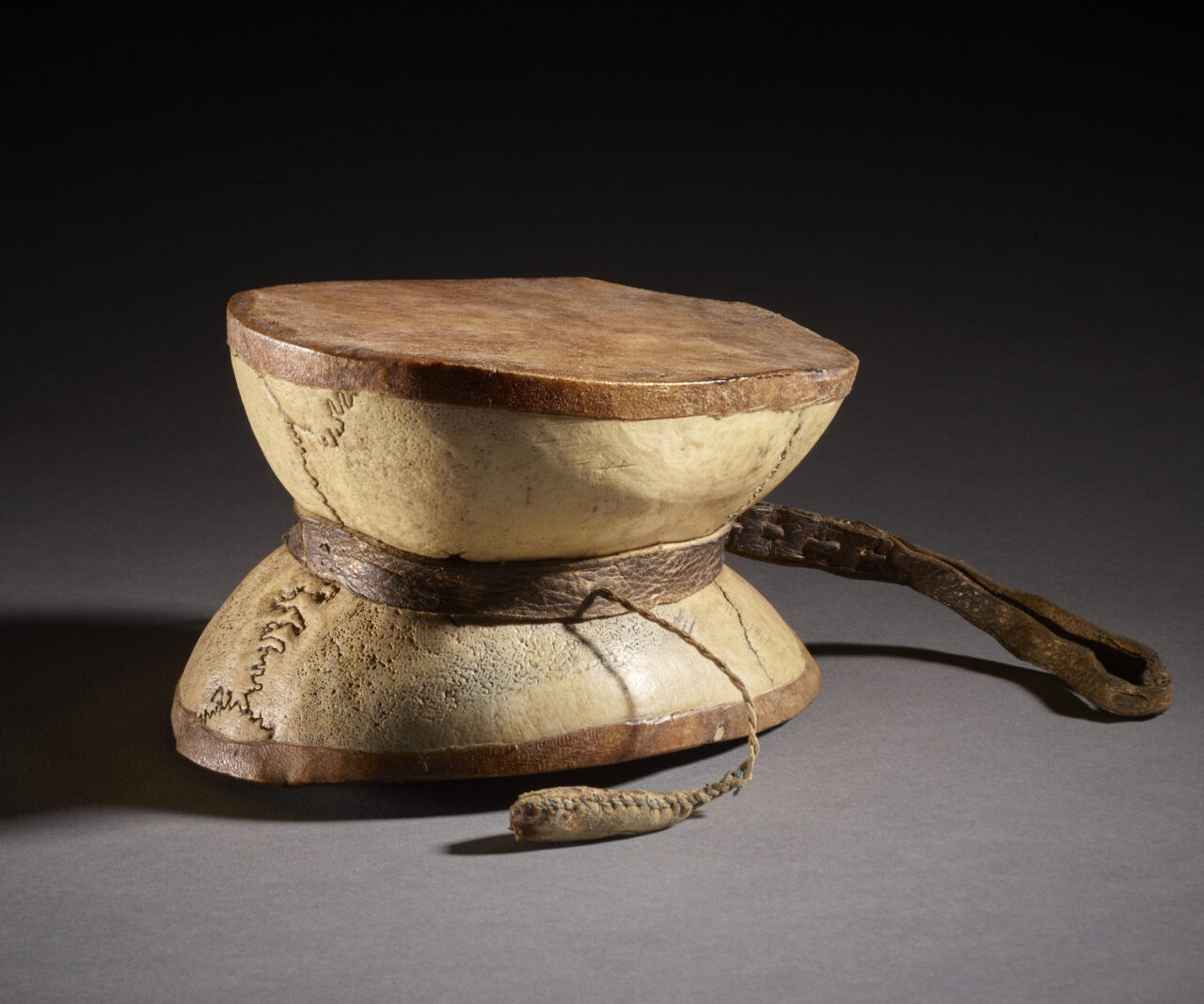Benjamin Bogin
Associate Professor, Director of Asian Studies Program
Skidmore College
Funerary rituals play a central role in the religious traditions of the Himalayas and some of the earliest artifacts from the region focus on death and the afterlife. In Tibetan Buddhism, contemplation of death is seen as a key to gaining freedom from the endless cycle of death and rebirth.
The exhibition includes several objects related to this topic, including:
- Materials used for the production of molded images (tsatsas), which are often made to commemorate a deceased loved one (and sometimes made from clay mixed with the ashes of a deceased).
- Paintings devoted to figures such as Machik Labdron who developed a unique meditation system focused on the visualized offering of one’s own corpse as a way to cut through attachment.
- Portraits of a special class of Buddhist teachers known as tulkus who are said to have gained mastery over the process of death and rebirth and indicate the time and place of their intentional rebirths.
Exploring Himalayan perspectives on death and rebirth through objects such as these offers rich opportunities for learning about Himalayan religions and engaging with students’ own views on death.
Critical Questions Permalink
- How do Tibetan Buddhists conceive of death and rebirth?
- What are some of the Himalayan ritual practices associated with the end of life?
- How were great Tibetan Buddhist teachers memorialized after death?
Exhibition Permalink
A few objects in the exhibition support this topic as the starting points.
Humans (Teachers)
Creating in Clay
Religious Goals
Instruction
Object Essays Permalink
This topic is largely supported by the publication, including the following essays.
The Bard Grad Center, "Tsa Tsa Making," YouTube, March 21, 2019, 5:49, https://www.youtube.com/watch?v=BX2DbFuqltc
Further Resources Permalink
Rubin Museum of Art Web Resources
Podcast – Dying is Living with Palliative Care Doctor BJ Miller
Article – The Returned: When Death is Not the End
Other Resources
Berounsky, Daniel and Lubomir Sklenka. 2005. “Tibetan Tsha Tsha.” In Annals of the Náprstek Museum, Prague, 59–72. [pdf available online here]
Prude, Alyson. 2019. “Tibetan Buddhist Perspectives on Death and Dying.” In Death and Dying: An Exercise in Comparative Philosophy of Religion, eds. Tim Knepper, Lucy Bregman, and Mary Gottschalk. Cham, Switzerland: Springer, 124–142.
Tulku Thondup. 2011. Incarnation: The History and Mysticism of the Tulku Tradition of Tibet. Boston, Shambhala Publications.
Glossary Terms Permalink
In Buddhism and Hinduism, samsara is the phenomenal world in which we live, and the cycle of birth, death, and rebirth. In Buddhism, samsara refers to the six realms of existence in which beings can be born according to their karma: as hell beings, hungry ghosts, animals, humans, demi-gods (Skt. asura), and gods. The central goal of Buddhism is to escape the suffering of samsara by achieving nirvana, a state beyond this cycle of rebirths.
Generally, bardo is the state in-between death and rebirth, but Tibetan traditions distinguish four or six bardos, which occur throughout life, such as the bardo of dreaming, and death. The bardos are junctures at which the possibility for awakening, or liberation, is amplified. The so-called “Tibetan Book of the Dead,” as well as other texts, provide guidance for navigating these states, so that the consciousness of the deceased can be born in fortunate realms of existence, or even enter into awakened state itself.
In Tibetan Buddhism, a tsatsa is a small sculpture created by pressing clay into a mold. Tsatsas can depict deities, stupas, auspicious signs, and more. Some tsatsas have medicinal plants, or the cremated ashes of loved ones mixed into the clay and taken to various sacred sites to generate merit for their better rebirth. In Newar context, a grain of rice is added. Tsatsas are created to generate religious merit and are often consecrated and then placed within stupas, or made by pilgrims and devotees and left at sacred sites. Tibetans have been creating tsatsas since around the eleventh century, and tsatsa making remains a common practice among lay devotees today.
Stupas are monuments that initially contained cremated remains of Buddha Shakyamuni or important monks, his disciples, and subsequently other material and symbolic relics associated with the Buddha’s body, teaching, and enlightened mind. As representations of the Buddha’s presence in the world, stupas with their contents—texts, relics, tsatsas—continue to be important objects of Buddhist worship in their diverse forms of domed structures, multistoried pagodas, and portable sculptures. The original form of stupas was an earthen dome-shaped mound containing the remains in reliquary vessels or urns deposited within the innermost core. The dome would often be successively enlarged and surrounded by a path for a walk around in a clockwise direction and veneration (circumambulation)
In Tibetan Buddhism, a tulku is a lineage of reincarnated lamas. Buddhists believe that sentient beings pass through infinite lives in samsara, reborn in new bodies after each death. Certain highly advanced practitioners are able to control this process, choosing their reincarnation. From the thirteenth century onward, this process became institutionalized in Tibet as a formal means of succession. When a tulku dies, a special team of monks and close disciples performs divinations and other tests to locate a child, who is then enthroned as the new incarnation of the lineage. Over the centuries, many of these lineages amassed immense estates (labrang), and became extremely powerful and prestigious within Tibetan and Mongol society. Important tulku lineages include the Karmapas, the Dalai Lamas, the Panchen Lamas, and the Jibzundambas.
Additional Keywords Permalink
-
bhavacakra




